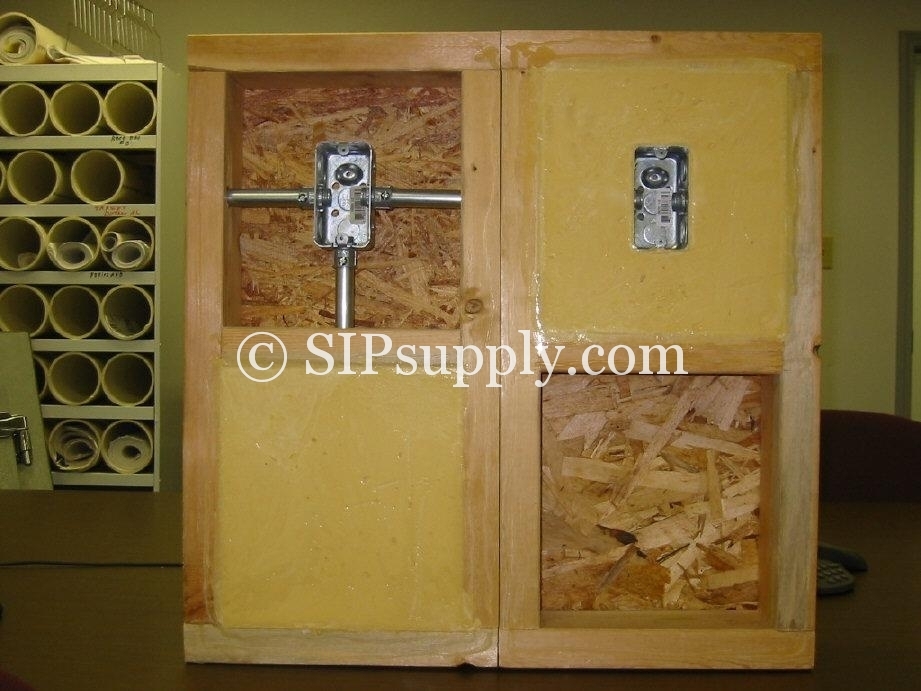PUR v. EPS Panels
Polyurethane Vs. EPS (Expanded Polystyrene) Panels in Comparison
Polyurethane is a relatively new product, roughly around 35 years. EPS has been with us for around 50 years. Polyurethane was produced to replace the shortfalls of expanded polystyrene. Below you will see a detailed difference between polyurethane, and expanded polystyrene.
R- Value
Polyurethane is the highest rated insulation in the world. You will find it in most all of your refrigerators, freezers, and even in your personal carry about coolers. Per inch of insulation it has no equal. The walk in coolers and freezers for use thought the country are made of polyurethane. EPS has a value of R-2 to R-5 per inch. Polyurethane has an R-Value OF R-7 to R-8 per inch
Manufacturing
Probably the biggest difference between Polyurethane and EPS is in the manufacturing of these panels. Both products use OSB for covering both sides of their foam, but here is where the similarity ends. In the bonding of the foam the actual polyurethane is used as bonding agent to the OSB itself. Polyurethane is one of the best glues used in the industry today. Some manufactures of OSB and plywood use polyurethane to bond their products together. When it comes to adhering, the use of polyurethane gives us both an excellent R- value and the strongest bond in the industry. EPS panels use glue spread on both sides of the OSB, and then the OSB is matched together with the EPS, and mechanically held in place and under pressure until the glue is dried.
Moisture Resistance
With all the problems of mold and mildew, moisture resistance is today a very important factor. Polyurethane has one of the lowest moisture Permeability ratings of any product manufactured for the building industry today. The permeance rating on polyurethane is 1.2. The permeance rating on EPS is 2.0 to 5.0
This difference in a high humidity area would warrant another moisture barrier for EPS panels. In calculating R-values, some EPS manufactures use these additional moisture barriers in there calculations.
Fire Resistance
The polyurethane is a UL Class 1 rated foam. This means that polyurethane is not a source for fire. On it’s own, polyurethane will not burn. When left on it’s own, it will extinguish it self. A Class 1 rating is the highest rating a building product can obtain. Also, polyurethane is a thermal-set plastic. This means, that it will not melt. Polyurethane is not affected until temperatures reach 1000 degrees and at that time it will only char. EPS on the other hand is not a thermal-set plastic and will begin to soften at temperatures of 180 degrees, and melt at temperatures of 240 degrees. Polyurethane has a distinct advantage.
Density
The density of a product will determine the strength of it. EPS has a density of 1 lb. The polyurethane has a density of 2.2lb.
Chemical Resistance
Polyurethane is resistant to most counter chemicals. EPS react violently to petroleum based products. PL 400 and liquid nail will literally burn thru EPS.
From our experience, we feel that the investment made equals the quality of product made. We believe that there is no comparison between Polyurethane v. EPS panels these key reasons:
| Polyurethane (PUR) | Polystyrene (EPS) |
R-Value |
|
| 4.5″ Polyurethane Panel= R-25 | 4.5″ EPS Panel= R-17 |
| 6.5″ Polyurethane Panel= R-40 | 6.5″ EPS Panel= R-27 |
Fire rating |
|
| resists and helps to quench a fire and will char (not ignite) at 1,000 degrees | melts and fuels a fire at 280 degrees |
Wind load |
|
| 180-200 MPH | 140-160 MPH |
| Note: Category 5 storms are winds greater than 155 miles per hour. | |
Related Posts
-
 SIPs cost less over time
No Comments | Oct 3, 2012
SIPs cost less over time
No Comments | Oct 3, 2012 -
 Sandwich Panels, are they SIPs?
4 Comments | Sep 20, 2012
Sandwich Panels, are they SIPs?
4 Comments | Sep 20, 2012 -
 Polyurethane Panels with conduit
1 Comment | Aug 20, 2012
Polyurethane Panels with conduit
1 Comment | Aug 20, 2012 -
 SIP v. Conventional Stick Framing Methods
2 Comments | Apr 9, 2012
SIP v. Conventional Stick Framing Methods
2 Comments | Apr 9, 2012

